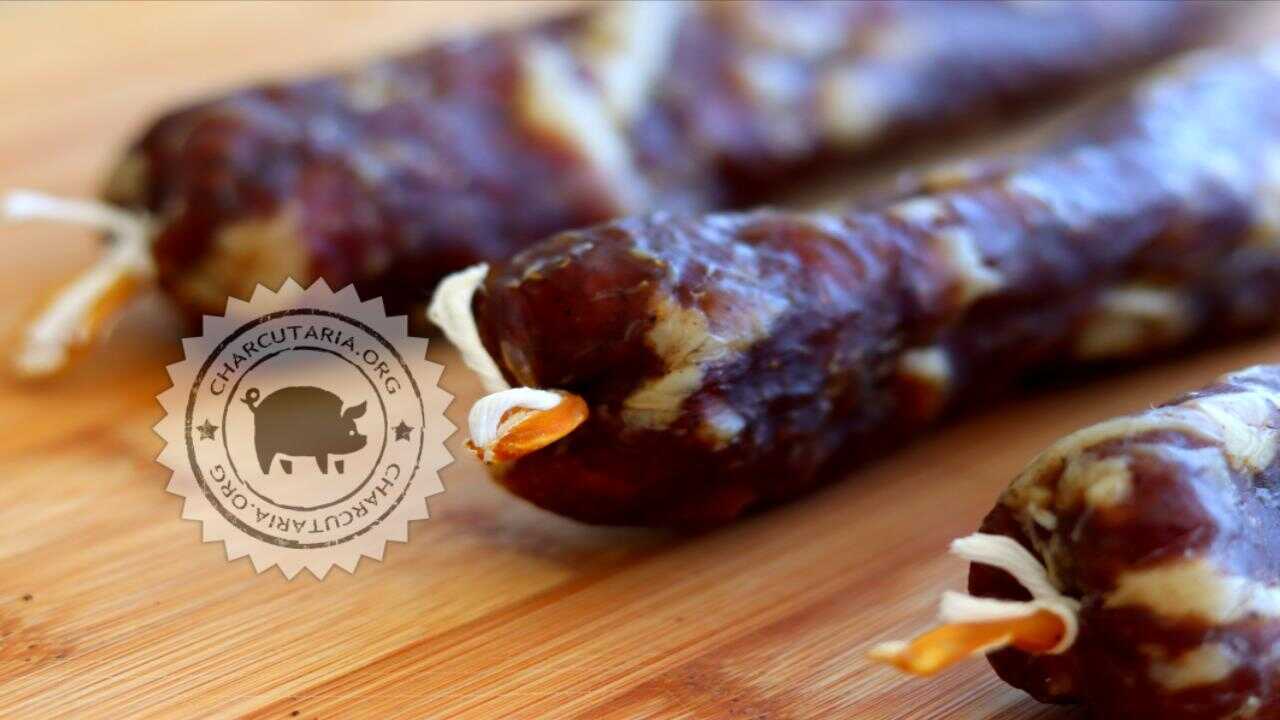
This salami was made for those who wish to produce homemade salami without any additives or do not intend to purchase equipment. Using things available at home it is possible to make great salami. The only additional ingredient that cannot be missing is tripe, which was straight beef in this case. I used a mini wine cellar, which I have at home, for the drying/maturation process.
A common refrigerator is another option, but it is important to use a box as was done in this recipe. homemade salami made in the fridge. The important thing is to demonstrate that anyone can make salami at home, without purchasing specific equipment.
Want to learn more, read the post How to make salami?
Important Note: This recipe does not use curing salt, if you want to sell or add more protection to your salami, read the post Curing salt what it is and how much to use or do many others salami recipes with curing salt that we provide.
Salami ingredients
1000g shank;
20g salt;
4g black pepper;
4g ground coriander seed;
4 cloves of garlic (approx. 20g);
50ml white wine;
3 units of straight beef tripe.
Salami preparation
Maturation/drying
Weight day 1 – starting weight
Salami 1: 463g
Salami 2: 431g
salami 3: 486g
Weight on the 18th – final weight
Salami 1: 224g (52% loss)
Salami 2: 205g (52% loss)
salami 3: 240g (51% loss)















Good morning!
What type of wine should I use, dry or sweet?
Thanks!
What do you prefer?
Hello! I would like to know a little about curing salt. I heard that it has a certain potential to cause cancer. That's why it's good to be careful with the amount of sausages we eat, but I'm still afraid to use them. Could you tell me if curing salt is so necessary? Is it possible to make most of the recipes on this site without it? There are many people who make salami without curing salt and many of the botulism cases I saw were not related to sausages. Thank you very much in advance
Read this post: Does curing salt cause cancer?
If you use the wrong amount, yes, it can cause it. If you are making homemade salami for immediate consumption, you do not need to use curing salt.
I have a climate-controlled wine cellar without a compressor… How can I have 80% humidity? Thanks.
I have a mini wine cellar like this, can I make the recipe without wine?
Yes, you can do it without the wine.
Good afternoon!
What is the approximate maturation time until it is reduced by 50^?
Around 40 days, it will vary depending on the thickness and conditions of the maturation site, such as humidity and ventilation.
Good afternoon!
Approximately, in how many days should salamis lose 45 to 50% of weight?
It depends on the thickness of the salami. Using 45mm casings, for example, it should take about 30 days. Thicker casings, like 60 or 80, will take 50, 60 to 90 days. It may also vary depending on the humidity and ventilation of the environment.